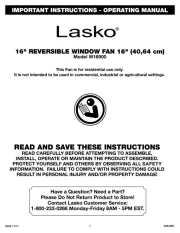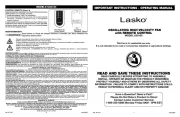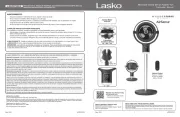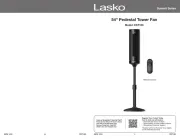Lasko Outdoor Living 4305 Manual
Lasko
Ventilator
Outdoor Living 4305
| Mærke: | Lasko |
| Kategori: | Ventilator |
| Model: | Outdoor Living 4305 |
Har du brug for hjælp?
Hvis du har brug for hjælp til Lasko Outdoor Living 4305 stil et spørgsmål nedenfor, og andre brugere vil svare dig
Ventilator Lasko Manualer

8 December 2025

7 September 2025

18 Juli 2025

19 Juni 2025

17 Juni 2025

18 Marts 2025

17 Marts 2025

17 Marts 2025

17 Marts 2025

17 Marts 2025
Ventilator Manualer
- BEEM
- Orima
- Trisa
- Canarm
- Fantini Cosmi
- Klarbach
- XPower
- Optimum
- Yamazen
- Quigg
- Crane
- Sygonix
- Gutfels
- Helios
- Mesko
Nyeste Ventilator Manualer

16 December 2025

16 December 2025

16 December 2025

16 December 2025

16 December 2025

11 December 2025

10 December 2025

10 December 2025

10 December 2025

9 December 2025
